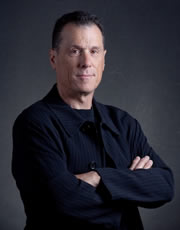 Last thoughts for the year…
Last thoughts for the year…
There are numerous narratives about the generative moment of contemporary art; theories about the genesis of this trajectory toward the present. However, regardless of which point of origin one adheres to, or wherever one places contemporary art within such histories, they are all, within the context of the twentieth and twenty-first centuries, framed by the narratives of modernism. Artists in the age of modernism have inhabited the spaces of painting, photography, film, dance, language, music, and sculpture, as well as the interstices between each. In those spaces, artists proffered cultural objects as a reflection of and as commentary on the modern era. Sifting through or indexing of the detritus and/or artifacts of modernism therefore reveals a cacophony of styles and disciplinary overlaps. Contrary to any attempt to chart a path of purity throughout the history of one disciplinary practice, modernism is replete with appropriation, indiscriminate formal couplings, and a general messiness that is often at odds with the historical rhetoric of the era. If the prevailing thesis of contemporary art were to rely on a temporal/formal mode of identification, that mode would quickly derailed by any number of exceptions to the rules of canonical inclusion, and moreover, contemporary narratives of the arts have relied on singularly recognizable genres of creative practice while eliding the presence of others.
One constant has been the embrace of the new. As early as 1922, Laszlo Moholy-Nagy (the artist and photographer associated with the Bauhaus) exhorted “artists to rethink their use of technology to create, rather than capture, new sounds and visions.” This is a notable and rarely cited prescription. It points toward a technologically mediated experience that is more than mimetic. It describes a space that was subsequently populated by artists such as the composer John Cage, video artist Nam Jun Paik, multi-media performer Laurie Anderson, and others for whom technology was a means by which to create temporal, durational, immersive multi-sensory hybrids. Maker-culture and digital toolsets have extended the ideas of Moholy-Nagy into the visual arts at all levels or production and distribution.
Hidden within the narrative articulated above are implicit manifestos for contemporary art. Indeed, throughout the histories of modernism and beyond, manifestos have driven progressive ideologies across all disciplines. Each movement in every field, whether it be dada, film (the Soviet school, Vertov’s Kinok Manifesto, Dogme 95), Surrealism, Abstract Expressionism, Minimalism, or in music, Serialism, is predicated of the annihilation of the previous movement—indeed its complete erasure and replacement by the new. In this avant-garde model, theory outpaces practice in that new theories or manifestos are often hypotheticals, suggestive of what a new art might look like or how it might function. Such theoretical propositions are often aspirational, requiring some sort of artist/audience to latch on and transform ideas into action.
As we move into summer, I hope that you will think about how to transform such ideas into action; that is a big part of our mission here, to make visible that which may otherwise remain hidden, to turn theory into practice.
Douglas Rosenberg
Professor and Chair, Art Department
